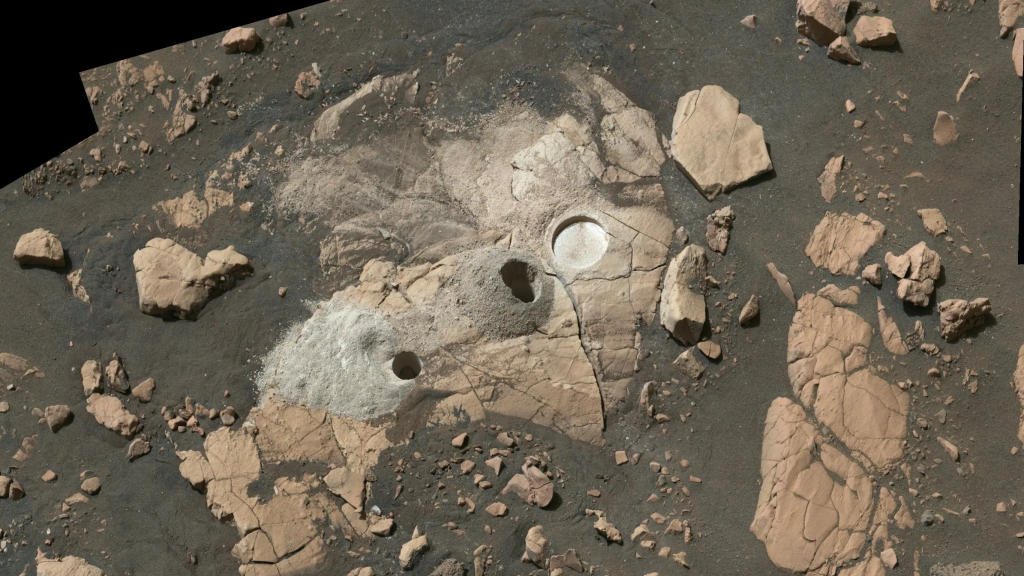
Earlier today, NASA briefed the public on the Perseverance rover’s current status on Mars, discussed highlights from the mission so far, and announced the discovery of organic molecules that could be associated with life. But this discovery comes with an 82 million-mile caveat.
NASA’s Perseverance rover has spent the last year and a half on Mars exploring an ancient lake bed called the Jezero Crater. Percy’s primary task is to collect rock-core samples from features within a 28 mile (45 kilometer) wide area long considered by scientists to be a prime location for finding signs of microbial life that may have existed 3.5 billion years ago.
“This mission is not looking for extant life things that are alive today,” Ken Farley, Perseverance project scientist, stated. “Instead, we’re looking into the very distant past when Mars climate was very different than it is today, much more conducive to life.”
“Wildcat Ridge” is the name of a rock about 3 feet (1 meter) wide in the Martian Jezero Crater and is believed to be an ancient delta formed by the convergence of a river and a lake.
“In the distant past, the sand, mud, and salts that now make up the Wildcat Ridge sample were deposited under conditions where life could have thrived. The fact the organic matter was found in such a sedimentary rock — known for preserving fossils of ancient life here on Earth — is important, said Farley.”

At this location, scientists say Percy abraded some of the surface on Wildcat Ridge before taking a sample and analyzing it using the rover’s Scanning Habitable Environments with Raman & Luminescence for Organics & Chemicals, or SHERLOC.
According to NASA’s press release, “SHERLOC’s analysis indicates the samples feature a class of organic molecules that are spatially correlated with those of sulfate minerals.”
Not only did Percy’s analysis indicate organic molecules, but what the team found was the largest concentration of organic matter yet during the mission. Organic molecules make up organic matter and are considered a key indicator of life and, by definition, any material produced originally by living organisms.
So, what’s the 88 million-mile caveat?
Perseverance rover isn’t equipped with the necessary equipment to give a definitive answer if it has evidence of ancient microbial life on Mars. “The reality is the burden of proof for establishing life on another planet is very, very high,” said Farley during the NASA press conference on Thursday. “For that, we need to examine Mars rocks up close and in person in Earth labs.”

The good news is that NASA has a plan to retrieve Percy’s samples in 2030. If all goes to plan, we could see them back on Earth in 2033. Until then, we’re only left to speculate the question on everyone’s mind. “Was there ever life on the red planet?”
FTC: We use income earning auto affiliate links. More.





Comments